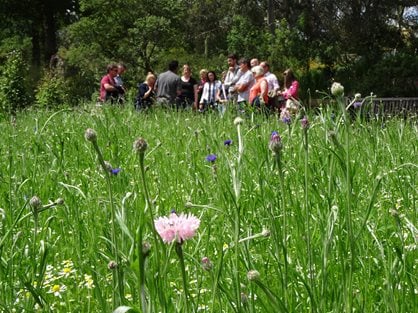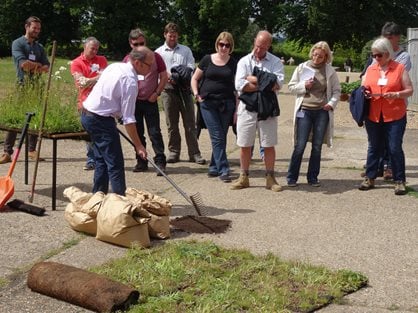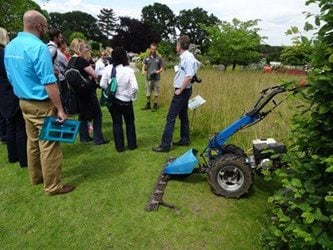It seems that gardeners and the public can't get enough of wildflower and naturalistic plantings, as a recent event at Wisley proved

Our
training day for professionals last week proved a huge success. Attended by head gardeners, garden designers, land managers and those working for local authorities, the event reached a wide range of people who had come to learn and share knowledge about using wildflowers in a horticultural context.
When not managing the
Plants for Bugs project, my role allows me to engage with gardeners from all fields. A topic that has been at the front of my mind for over a year is that of wildflower use in gardens and green spaces. Links to loss of wildflowers in the countryside and declines in our insect pollinators are now well recognised. But
naturalistic plantings are good for humans too. They've been used to help reduce anti-social behaviour in urban areas and give communities a sense of well-being.
Talking points
An entertaining talk from Matthew Wilson on "Designing the Wild" kicked off the day. Morning talks from my RHS colleague James Armitage on "What is a Wildflower", Sue France (Director of Pictorial Meadows) on "Getting to Grips with Dynamic Communities", James Hewetson-Brown (Wildflower Turf UK) on "Guaranteeing Wildflower Establishment – A Practical Insight" and Teija Ahjokoski (Bristol City Council Horticulture) on "Floral Meadows in the Public Eye – a Local Authority Perspective". Teija's work tied in with a pollinator initiative called 'Get Bristol Buzzing' which has some useful online resources for pollinator-friendly meadow establishment.
 After lunch James Hewetson-Brown, (who recently worked with designer Dan Pearson on his Best in Show Chelsea show garden), gave a demo of their turf laying and introduced a new product, Wildflower Earth.
After lunch James Hewetson-Brown, (who recently worked with designer Dan Pearson on his Best in Show Chelsea show garden), gave a demo of their turf laying and introduced a new product, Wildflower Earth.
The seed/compost mix could be applied straight on to bare soil, reducing the need for machinery/skilled operatives and undersirable weeds being turned up in the seed bank. It was particularly of interest to those working in local authorities seeking a cheaper alternative to the turf but a guaranteed germination.
Walking on the wild side of Wisley
 Garden tours highlighted areas at RHS Garden Wisley where wildflowers, naturalised bulbs and ornamental annual mixes were all being used to great effect.
Garden tours highlighted areas at RHS Garden Wisley where wildflowers, naturalised bulbs and ornamental annual mixes were all being used to great effect.
Delegates quizzed staff about their management of such plantings. The day finished with a sharing session from representatives from all four RHS Gardens, revealing the true breadth of wildflowers in use at the RHS, from orchid meadows at Rosemoor and wildflower swales at Harlow Carr, to the Big Sky Meadows that are being constructed at Hyde Hall with Professor James Hitchmough.
Read about the Plants for Bugs study

